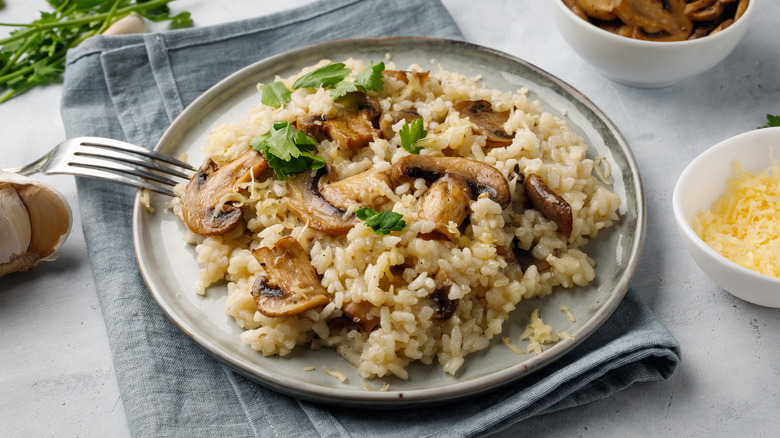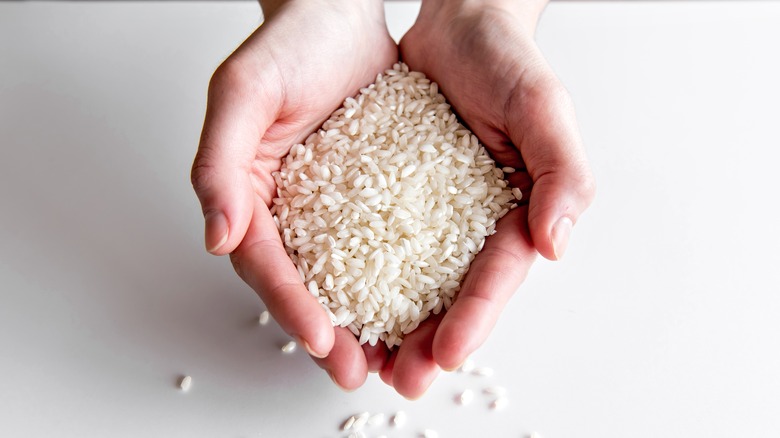The Type Of Rice You Should Be Using For Risotto
If you've been an avid "MasterChef Australia" fan since the first season aired 13 years ago, you need no reminding about the dreadful risotto curse that's haunted contestants ever since. Famously dubbed as the "death dish," risotto has been responsible for sending many contestants home, including putting the Julie Goodwin-led brown team in elimination in the latest "Fans & Favorites" season (via GoodFood).
Even if you're not a "MasterChef" buff, it's easy to see why risotto has a reputation for being an Italian dish that's one of the hardest to master. How could the same rice that makes perfectly dry and grainy fried rice, possibly make luxuriously creamy risotto too? Well, that's the point — it can't. The biggest mistake people tend to make with risottos is assuming that one type of rice fits all.
If you've been using plain white rice all this while and wondering why your risotto turns into a disastrous mess, it's because you're not using the right variety of rice that's supposed to make stunning risottos. According to Real Simple, although there are several varieties of risotto rice, arborio is the most common one used to make the Italian classic.
Starchy rice is the key to a good risotto
Unlike your usual rice-based preparations that require the rice to be washed off of all the starch, Real Simple says that starch is your best friend when you're making risotto. According to The Spruce Eats, all varieties of rice contain two kinds of starch, amylose and amylopectin. While amylose does not break down when cooked, amylopectin breaks into a gelatine-like creamy consistency that you want in your risotto. And short grain varieties of rice like arborio tend to contain more amylopectin. It's the amylopectin starch present in varieties like arborio rice that produces a creamy dish when cooked and stirred with hot broth. This is also why you shouldn't don't the rice that you're using to make the risotto as you want all the starch that you can get in here.
Of course, there are some substitutes for arborio rice, and per Kitchn, a good way to find a variety of rice that will cook into a thick risotto is to look for anything with a high amylopectin content. These short to medium-sized plump rice grains also hold up well to the constant stirring and cooking necessary when making risotto, whilst softening up just enough to have a bit of an al dente-like chew to them. Once you've managed to snag the right bag of rice fit to make a risotto, here's a simple parmesan risotto recipe for you to try!

